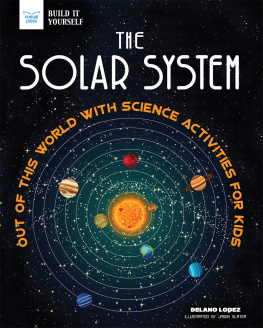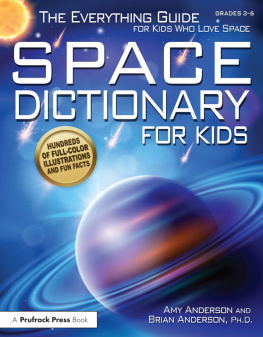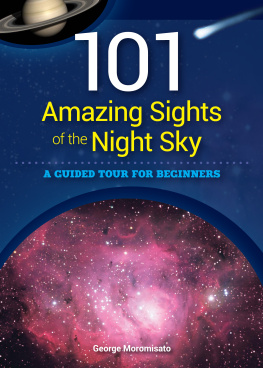


Copyright 2018 by Rockridge Press, Emeryville, California
No part of this publication may be reproduced, stored in a retrieval system, or transmitted in any form or by any means, electronic, mechanical, photocopying, recording, scanning, or otherwise, except as permitted under Sections 107 or 108 of the 1976 United States Copyright Act, without the prior written permission of the Publisher. Requests to the Publisher for permission should be addressed to the Permissions Department, Rockridge Press, 6005 Shellmound Street, Suite 175, Emeryville, CA 94608.
Limit of Liability/Disclaimer of Warranty: The Publisher and the author make no representations or warranties with respect to the accuracy or completeness of the contents of this work and specifically disclaim all warranties, including without limitation warranties of fitness for a particular purpose. No warranty may be created or extended by sales or promotional materials. The advice and strategies contained herein may not be suitable for every situation. This work is sold with the understanding that the Publisher is not engaged in rendering medical, legal, or other professional advice or services. If professional assistance is required, the services of a competent professional person should be sought. Neither the Publisher nor the author shall be liable for damages arising herefrom. The fact that an individual, organization, or website is referred to in this work as a citation and/or potential source of further information does not mean that the author or the Publisher endorses the information the individual, organization or website may provide or recommendations they/it may make. Further, readers should be aware that Internet websites listed in this work may have changed or disappeared between when this work was written and when it is read.
For general information on our other products and services or to obtain technical support, please contact our Customer Care Department within the United States at (866) 744-2665, or outside the United States at (510) 253-0500.
Rockridge Press publishes its books in a variety of electronic and print formats. Some content that appears in print may not be available in electronic books, and vice versa.
TRADEMARKS: Rockridge Press and the Rockridge logo are trademarks or registered trademarks of Callisto Media Inc. and/or its affiliates, in the United States and other countries, and may not be used without written permission. All other trademarks are the property of their respective owners. Rockridge Press is not associated with any product or vendor mentioned in this book.
and Interior Designer: Merideth Harte
Art Manager: Amy Hartmann
Editor: Susan Randol
Production Editor: Andrew Yackira
Icon and Equipment Illustrations: Steve Mack
ISBN: Print 978-1-64152-143-7 | eBook 978-1-64152-144-4

For the stars of my life, my sons Daniel and Kevin
CONTENTS
A s a science teacher who also creates engaging science curricula for students like you, I know that one of the most difficult aspects of teaching astronomybesides not being able to take you on a field trip to spaceis that students and teachers time together ends when the afternoon bell rings. This is a problem because we all know that the best time to see stars, planets, and constellations is in the evening when the Sun goes down. From the classroom, a teacher is able to share strategies for understanding the phases of the Moon, help you simulate the seasons with simple tools, and provide images and materials to help you build models of the solar system. However, if all that were enough to answer all your questions about space and how to become an astronomer, you wouldnt be holding this book right now.
Your curiosity tells me youre already a true scientist. A scientist tries to understand the world around them by asking questions and trying to find the answers. Your curiosity has led you to this book and to the path of becoming a great astronomera scientist who studies natural objects in space, such as the Sun, the Moon, planets, stars, and comets. However, when you look up into the night sky, you start to realize how GINORMOUS space is, and thats when your questions start to form. How in the world are you supposed to know the difference between a star and a planet? What is a shooting star? Why does it look like constellations move over time? What equipment do you need to study space? All of these are excellent questions, and I know you have more, which is why you are holding the perfect book to help you find the answers youre looking for. Why, you ask? Well, if it were me, and I had questions about space and the objects in it, I would definitely want to learn from a planetary scientist, just like Dr. Bruce Betts, who wrote Astronomy for Kids for you!
Many astronomers started out by looking up to the sky, and Astronomy for Kids is designed to be used as a take-along, sky-gazing reference tool. Whether you have a pair of binoculars, a telescope, or just your eyes, you can use the images on each page to help you find what you are looking for. Not only that, but once you find a constellation, or a cluster of stars, Dr. Betts will guide you on how to use that point to find another celestial body. And lets not forget the numerous cool facts hell share throughout the book that will make you a hit on your next astronomy club outing. Wait, you dont have an astronomy club? Looks like Ive just met the next astronomy club president in your area.
People have been exploring the night skies ever since someone first looked up, and astronomers are still making discoveries today. Now its time for you to plan your own night watch, grab Astronomy for Kids , and head outside to start making your own discoveries among the stars.
-ERICA L. COLN, PhD
Founder of Nitty Gritty Science, LLC
I have loved looking at the night sky since I was a small child. To this day, looking up and seeing familiar stars, constellations, and planets fills me with a sense of wonder and joy. They are like old friends that I can always rely on. The night sky is beautiful, but it becomes fun and interesting as you learn how to find and identify certain stars and constellations, and how to watch the movement of the planets. You also can share what you learn with your friends and family, pointing out things in the sky and talking about what they are. You can say things like, Thats Jupiter, and Those stars are the constellation Cygnus the Swan, and That group of stars doesnt have a name but I think it looks like my dog getting belly rubs.
Many experts agree that the best way to start out in astronomy is to study the sky with just your eyes. You should get to know the sky and its objects before you move on to binoculars and telescopes. If you have them, binoculars and telescopes can then be used to bring out the details of these objects and to find other things that are not visible with just your eyes. For example, you can see the planet Saturn with just your eyes, its largest moon with binoculars, and its rings with a telescope.
This book starts with objects you can see with your eyes, then moves on to objects you can see with binoculars, then to objects you can see with a telescope. Youll learn about stars, constellations, planets, and other things and how to find them. Youll also get some general tips, learn about binoculars and telescopes, pick up some fun facts, and find out where you can learn more.













